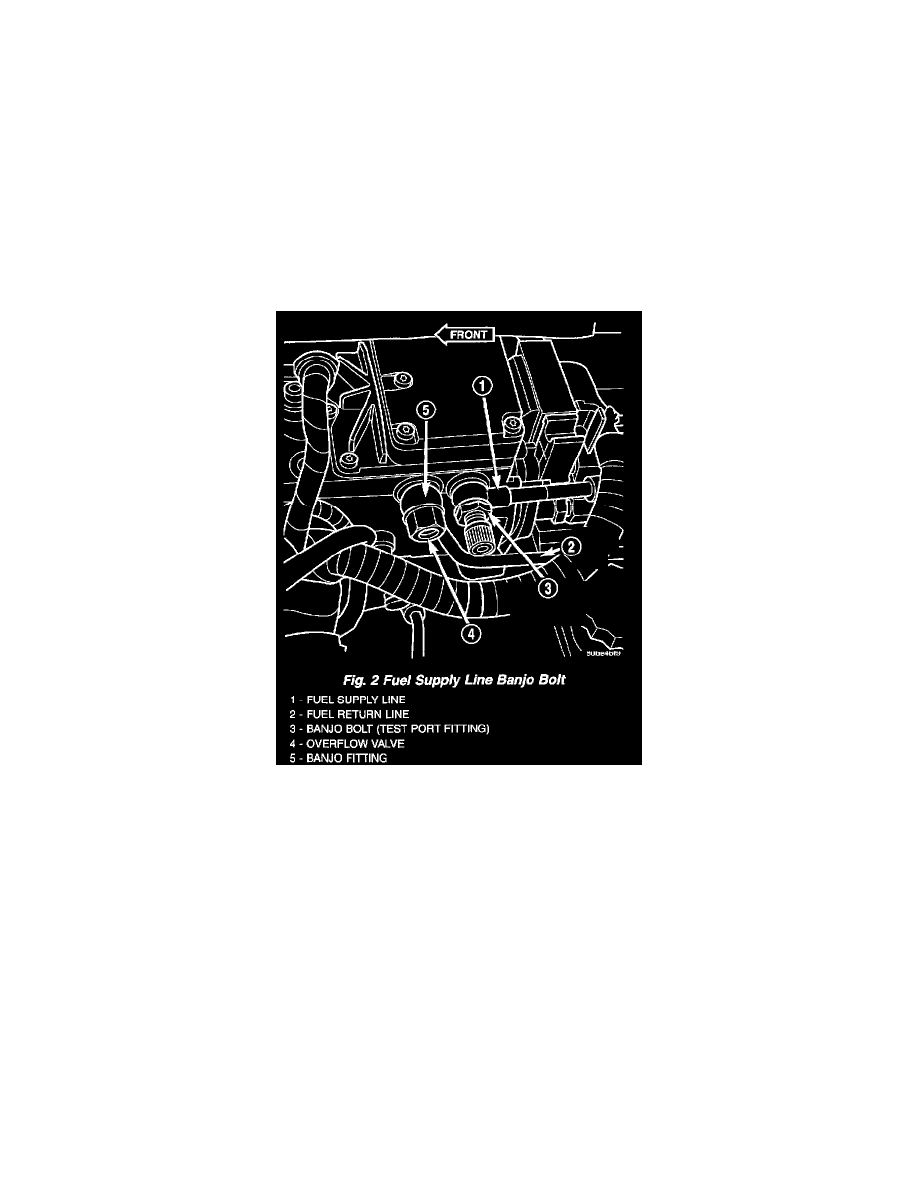RAM 2500 Truck 2WD L6-5.9L DSL Turbo VIN 7 (2001)

Air Cleaner Housing: Service and Repair
CAUTION: Cleanliness cannot be overemphasized when handling or replacing diesel fuel system components. This especially includes the fuel
injectors, high-pressure fuel lines and fuel injection pump. Very tight tolerances are used with these parts. Dirt contamination could cause rapid part wear
and possible plugging of fuel injector nozzle tip holes. This in turn could lead to possible engine misfire. Always wash/clean any fuel system component
thoroughly before disassembly and then air dry. Cap or cover any open part after disassembly. Before assembly, examine each part for dirt, grease or
other contaminants and clean if necessary. When installing new parts, lubricate them with clean engine oil or clean diesel fuel only.
AIR BLEED
A certain amount of air becomes trapped in the fuel system when fuel system components on the supply and/or high-pressure side are serviced or
replaced. Primary air bleeding is accomplished using the electric fuel transfer (lift) pump. If the vehicle has been allowed to run completely out of fuel,
the fuel injectors must also be bled as the fuel injection pump is not self-bleeding (priming).
Servicing or replacing components on the fuel return side will not require air bleeding.
WARNING: DO NOT BLEED AIR FROM THE FUEL SYSTEM OF A HOT ENGINE.
Fig. 2 Fuel Supply Line Banjo Bolt
1. Loosen, but do not remove, banjo bolt (test port fitting) holding low-pressure fuel supply line to side of fuel injection pump (Fig. 2). Place a shop
towel around banjo fitting to catch excess fuel. The fuel transfer (lift) pump is self-priming: When the key is first turned ON (without cranking
engine), the pump operates for approximately 2 seconds and then shuts OFF. The pump will also operate for up to 25 seconds after the starter is
quickly engaged, and then disengaged without allowing the engine to start. The pump shuts OFF immediately if the key is on and the engine stops
running.
2. Turn key to CRANK position and quickly release key to ON position before engine starts. This will operate fuel transfer pump for approximately
25 seconds.
3. If fuel is not present at fuel supply line after 25 seconds, turn key OFF. Repeat previous step until fuel is exiting at fuel supply line.
4. Tighten banjo bolt at fuel supply line to 24 Nm (18 ft. lbs.) torque. Primary air bleeding is now completed.
5. Attempt to start engine. If engine will not start, proceed to following steps. If engine does start, it may run erratically and be very noisy for a few
minutes. This is a normal condition.
6. Continue to next step if:
-
The vehicle fuel tank has been allowed to run empty
-
The fuel injection pump has been replaced
-
High-pressure fuel lines have been replaced
-
Vehicle has not been operated after an extended period
CAUTION: Do not engage the starter motor for more than 30 seconds at a time. Allow two minutes between cranking intervals.
